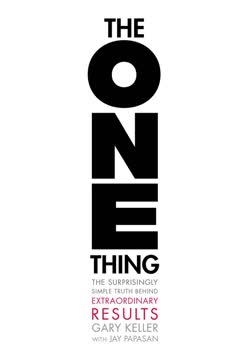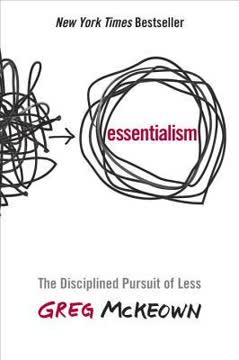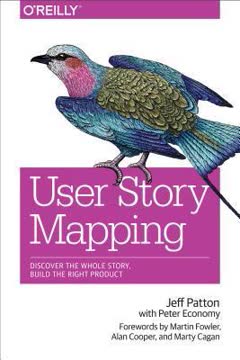Key Takeaways
1. OKRs: Aligning Mission, Strategy, and Execution
"OKRs are a powerful management tool that has been gaining ground among innovative companies in the technology, retail, and even non-profit sectors."
Mission-driven strategy. OKRs (Objectives and Key Results) provide a framework for organizations to align their mission, strategy, and day-to-day execution. They help companies translate their long-term vision into actionable, measurable goals at every level of the organization.
Cascading alignment. The OKR process starts with the company's mission and strategy, which are then broken down into more specific objectives and measurable key results. These cascade through the organization, ensuring that every team and individual understands how their work contributes to the bigger picture.
Benefits of OKRs:
- Improved focus and prioritization
- Better alignment across the organization
- Increased motivation through challenging but achievable goals
- Development of a results-oriented culture
2. The Evolution of Goal-Setting: From MBO to OKRs
"Andy Grove didn't bring any transformational insight into the MBO framework but instead suggested that its employees describe their goals (which were basically SMART goals) in conjunction with what they called Key Results, which were steps or action plans that guided the collaborator towards the goal."
Historical context. OKRs evolved from earlier management practices, including Management by Objectives (MBO) introduced by Peter Drucker in the 1950s. The concept was further developed by Andy Grove at Intel, who introduced the idea of pairing objectives with key results.
Key differences from traditional goal-setting:
- Shorter cycles (typically quarterly) for faster adaptation
- Less direct link to compensation, encouraging more ambitious goals
- Greater transparency and visibility across the organization
- Combination of top-down and bottom-up goal-setting
Silicon Valley influence. OKRs gained widespread popularity after being adopted by Google and other tech companies, leading to their spread throughout Silicon Valley and beyond.
3. Crafting Effective OKRs: Objectives and Key Results
"A good OKR should be built in such a way that if the Key Results are all achieved, you should feel comfortable that the Objective has been reached."
Objectives. These are qualitative, aspirational statements that describe what you want to achieve. They should be clear, actionable, and aligned with the company's overall strategy.
Key Results. These are the quantifiable metrics that measure progress towards the objective. They should be specific, measurable, and time-bound.
Characteristics of effective OKRs:
- Clear and concise language
- Ambitious but achievable targets
- Focus on outcomes rather than activities
- Limited number (3-5 per individual or team)
- Public and transparent within the organization
4. Implementing OKRs: A Gradual, Focused Approach
"Baby steps: You can start with one company-wide Objective and three or four Key Results in a one-month cycle. See how it goes, learn from the process, and repeat."
Gradual implementation. Introducing OKRs should be a phased process, starting with a limited scope and expanding over time. This allows the organization to learn and adapt the system to its unique needs.
Steps for implementation:
- Start with company-level OKRs
- Gradually cascade to teams and departments
- Begin with shorter cycles (e.g., monthly) and extend as needed
- Limit the number of OKRs to maintain focus
- Continuously refine the process based on feedback and results
Focus on quality. It's better to have a few well-crafted, impactful OKRs than many poorly defined ones. Emphasize quality over quantity, especially in the early stages of implementation.
5. The OKR Cycle: Planning, Monitoring, and Debriefing
"More important than the definition of OKRs are the rituals that form their cadence: what we'll call monitoring. Monitoring is where the rubber meets the road."
Planning phase. This involves setting OKRs at all levels of the organization, ensuring alignment between company, team, and individual goals.
Monitoring phase. Regular check-ins and results meetings keep everyone accountable and allow for course corrections as needed.
Key elements of effective monitoring:
- Focus on off-track OKRs to maximize meeting efficiency
- Foster a culture of problem-solving, not blame
- Use a framework to assess progress and identify root causes
Debriefing phase. At the end of each OKR cycle, teams reflect on their performance, grade their OKRs, and extract lessons for future improvement.
6. Fostering a Culture of Accountability and Learning
"A big part of making monitoring, and OKRs in general, work is to foster a constructive, positive environment around these meetings."
Psychological safety. Create an environment where team members feel comfortable discussing challenges and failures without fear of retribution.
Focus on learning. Emphasize the importance of learning from both successes and failures. Encourage teams to analyze why certain approaches worked or didn't work.
Continuous improvement. Use the insights gained from each OKR cycle to refine processes, strategies, and future goal-setting.
7. Avoiding Common OKR Pitfalls
"Don't despair if you don't know exactly what your organization's mission or strategy are. You don't need precision in order to start setting OKRs."
Common mistakes to avoid:
- Setting too many OKRs
- Making OKRs too easy or too difficult
- Failing to monitor progress regularly
- Directly linking OKRs to compensation
- Focusing solely on top-down goal-setting
Solutions:
- Limit OKRs to 3-5 per cycle
- Aim for challenging but achievable goals
- Establish regular monitoring and review processes
- Use OKRs primarily for alignment and motivation, not compensation
- Encourage bottom-up input in goal-setting
8. OKRs for Product Teams: Focusing on Outcomes, Not Output
"OKRs are all about RESULTS"
Outcomes over output. Product teams should focus their OKRs on desired user behaviors (outcomes) rather than features to be shipped (output).
Examples of product team outcomes:
- Increased user engagement (e.g., time spent in app)
- Improved conversion rates
- Higher customer satisfaction scores
Linking outcomes to impact. While outcomes are the focus of OKRs, teams should understand how these outcomes contribute to broader business impacts (e.g., revenue, profitability).
Continuous experimentation. Use OKRs to guide experimentation and discovery, allowing product teams to iterate quickly and find the most effective ways to achieve desired outcomes.
Last updated:
Review Summary
OKRs, From Mission to Metrics receives mixed reviews, with an average rating of 3.63/5. Readers appreciate its concise introduction to OKRs, practical examples, and clear implementation methods. Many find it a quick, easy read that provides a good overview of the concept. However, some criticize the e-book version for typos and grammar errors, which hinder readability. Reviewers note its value for those wanting to understand and implement OKRs but suggest it could benefit from more depth in certain areas and additional example forms.
Similar Books







Download PDF
Download EPUB
.epub digital book format is ideal for reading ebooks on phones, tablets, and e-readers.




